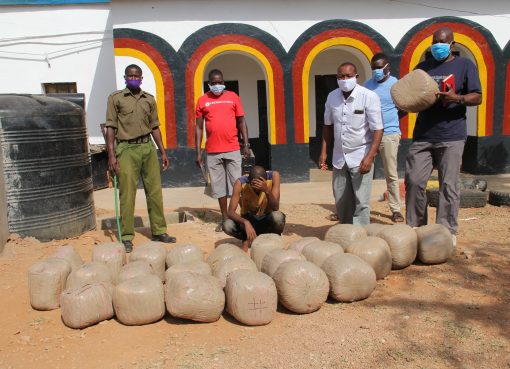The National Syndemic Diseases Control Council has introduced opioid substitution therapy as one of the measures to contain a spike in new HIV infections within the country’s prison institutions.
The move comes after the council raised an alarm over increased rates of new infections among inmates that have mostly been occasioned by the use of shareable injectable drugs.
The new developments continue to pose a big challenge to the country’s response and containment of new HIV infections which are currently affecting the youth.
Furthermore, the council said over 46,000 Kenyans were using injectable drugs, with alcohol and other substance abuse contributing to higher infections recorded by the relevant government authorities.
According to the Council CEO, Dr. Ruth Laibon, prisons have recorded a higher prevalence of inmates being infected with HIV, which has prompted the government to integrate its response services within the institutions.
Dr. Laibon said the government has been spending over Sh1 billion to provide opioid substitution therapy care to the affected drug users within the prisons to manage their addiction and lower rates of new infections.
“Injectable and shareable drug users have a five times higher rate of being infected with HIV, and we have introduced 11 centres across seven counties to provide therapy care for users,” said Dr. Laibon.
Speaking in Naivasha during a stakeholder’s engagement with the Judiciary, Dr. Laibon said necessary reforms are needed, including reviewing the Aids Control Act (2006) to enhance rights of access to HIV/AIDS services for prisoners.
In addition, the CEO raised concerns over the reduction of global donor funding to the country, which has seen Kenya lose up to 12 billion for commodities this year alone.
Dr. Laibon said the huge cut in donor funding, which contributes 80 per cent of commodities used in the fight against HIV, has led to a shortage of condoms for users as well as the suspension of critical education programmes for Kenyans.
The cut in funding Laibon said has been occasioned by Kenyans being reclassified as middle-income countries from low-income status as well as donor countries redirecting part funds to their economic recoveries.
The CEO said the country recorded 16,000 new HIV infections this year, with 1.4 million people living with the virus, of whom 98 per cent have been put on treatment.
In addition, Dr. Laibon said the council is in trace for more than 44,000 HIV-infected persons who are yet to be on boarded to the government treatment programme to ensure all infected persons access fully health services for their conditions.
According to the council statistics, the CEO regretted that HIV/AIDS-related illnesses continue to rob the country of energetic individuals from the age of 49 years and above who continue to record higher death rates.
Consequently, Dr. Laibon regretted that men and children have been left behind in the fight against HIV, adding that the Arid and Semi-Arid counties continue to record low access to treatment services.
On her part, Annerita Murungi, the CEO of the HIV/AIDS Tribunal, said people living with HIV continue to experience stigma and discrimination in work environments.
Murungi said there’s a need to create more awareness of violations of the rights of people living with HIV/AIDS to ensure they are key players within Kenyan society.
Further, Hortense Minishi, the Deputy Executive Director at KELIN, a Health and Human Rights NGO, said the organisation has been at the forefront in providing legal support to people affected by discrimination due to their health status.
Minishi said there is a need to enhance access to justice for those affected by stigma and discrimination to ensure their health rights are respected.
Kenya has in the last decade made major progress in the fight against HIV/AIDS, with a 53 per cent decrease in new infections since 2010 and over 60 per cent on related deaths.
The remarkable progress in suppressing new infections and achieving the government commitment to end the pandemic by the year 20230 maybe threatened by pronouncements by officials of higher infections recorded recently among young people.
By Erastus Gichohi and Paul Wainaina




